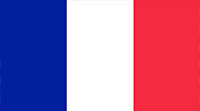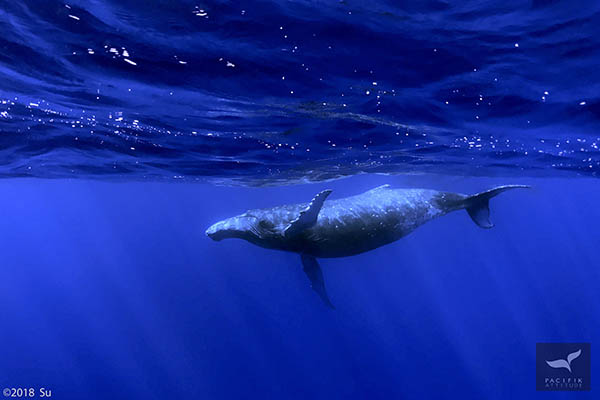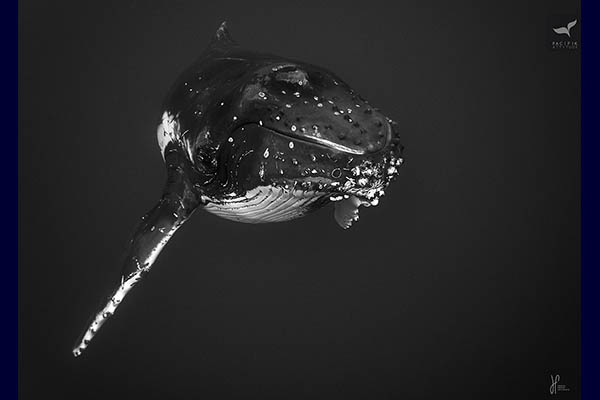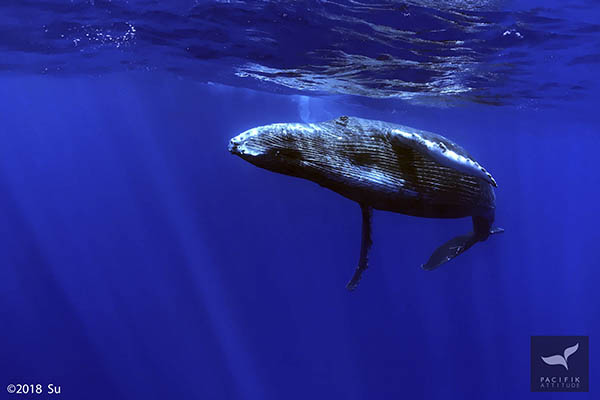
Whales
Each year, southern hemisphere humpback whales migrate from Antarctica to French Polynesia where they come to calve, rest and reproduce. They are regularly sighted within 2km from shore including the bays occasionally.
The excursion objective is to bring you within close proximity of the whales so you may observe them conveniently from the boat. Getting closer requires basic snorkeling skills to enter the water and interact with the whales in their element. With a bit of luck, a calf will take special interest (they usually do) and/or you will feel whale song!
Note : Pacifik Attitude does not support the JARPA Plan.
The excursion objective is to bring you within close proximity of the whales so you may observe them conveniently from the boat. Getting closer requires basic snorkeling skills to enter the water and interact with the whales in their element. With a bit of luck, a calf will take special interest (they usually do) and/or you will feel whale song!
Note : Pacifik Attitude does not support the JARPA Plan.
Sunrise Expedition
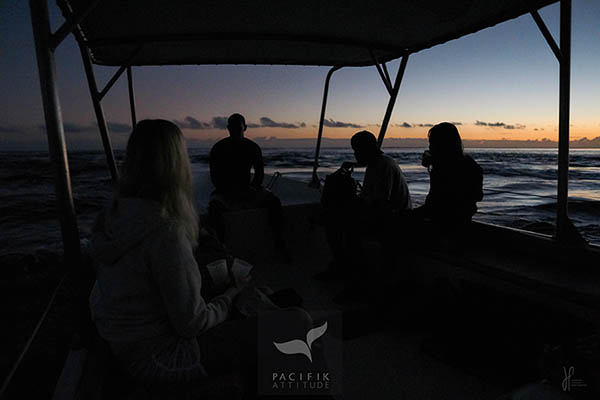
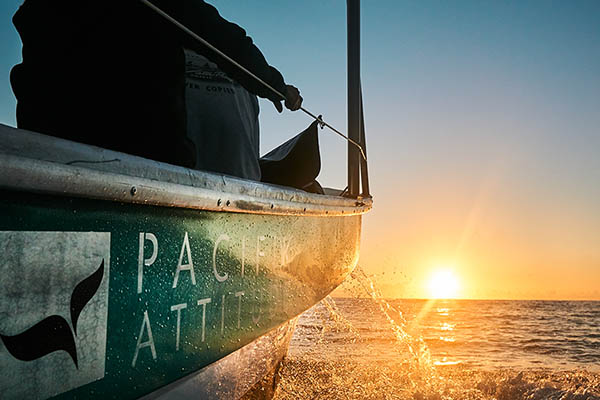
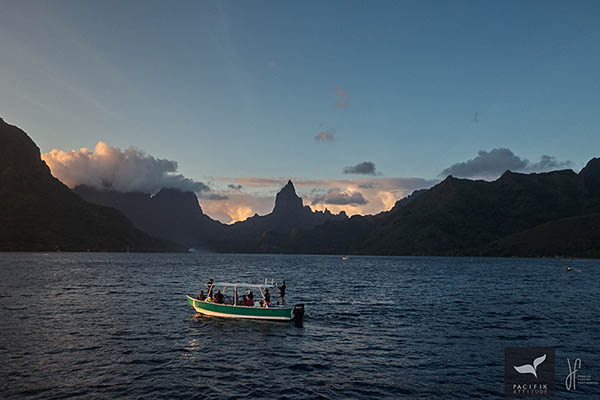
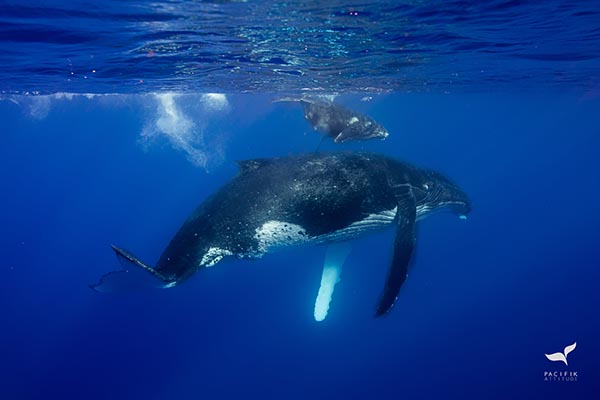
Experience “Sunrise with Humpback Whales” – A Unique Adventure with Pacifik Attitude
Escape the ordinary and join Pacifik Attitude for an exclusive, off-the-beaten-path experience: “Sunrise with Humpback Whales.”
Schedule: from 5:45 am to 9:45 am
Languages: French and english
Capacity: Limited to 6 passengers for an intimate and personalized experience
Onboard Amenities: A light breakfast, hot beverages, and refreshments will be served during your excursion.
Enjoy free transfers from your accommodation anywhere on the island of Mo'orea.
(Please note that transfers are made at strategic pickup points across the island. Slight delays may occur if previous guests are not ready on time.)
Price per Guest:
Escape the ordinary and join Pacifik Attitude for an exclusive, off-the-beaten-path experience: “Sunrise with Humpback Whales.”
Schedule: from 5:45 am to 9:45 am
- 5:45 AM to 9:45 AM (July to mid-September)
- 5:30 AM to 9:30 AM (mid-September to mid-November)
Languages: French and english
Capacity: Limited to 6 passengers for an intimate and personalized experience
Onboard Amenities: A light breakfast, hot beverages, and refreshments will be served during your excursion.
Enjoy free transfers from your accommodation anywhere on the island of Mo'orea.
(Please note that transfers are made at strategic pickup points across the island. Slight delays may occur if previous guests are not ready on time.)
Price per Guest:
- 25 000 XPF (approx. 228$)
Whale excursion half day:
Duration: 3 to 4 hours
Start time : 09:45 am and 1:45 pm
Languages: French and english
Capacity: 6 passengers
Enjoy free transfers from your accommodation anywhere on the island of Mo'orea.
(Please note that transfers are made at strategic pickup points across the island. Slight delays may occur if previous guests are not ready on time.)
Onboard Amenities:
Price per Guest:
Start time : 09:45 am and 1:45 pm
Languages: French and english
Capacity: 6 passengers
Enjoy free transfers from your accommodation anywhere on the island of Mo'orea.
(Please note that transfers are made at strategic pickup points across the island. Slight delays may occur if previous guests are not ready on time.)
Onboard Amenities:
- Light lunch (quiche, sandwich or pizza) and drinks for the 09:45 am tour.
- Local fruit platter and drinks for the 1:45 pm tour.
Price per Guest:
- 25 000 XPF (approx. 228$)
What to Bring for the Best Experience :
A light windjacket, sunglasses, a towel, and personal snorkeling gear if available. A wetsuit or shorty for added buoyancy and comfort during water activities.Important Information :
- Port obligatoire d’un équipement individuel de flottabilité : Mandatory use of individual flotation equipment: a minimum 3mm neoprene wetsuit (shorty or full-length) is now required and not provided on board. Although this rule has existed for several years, it was rarely enforced or checked in the past. For reasons of comfort and hygiene, we strongly recommend bringing your own wetsuit in your luggage.
- Tours are not recommended for pregnant women or those who had major surgeries (cardiac, joint, or otherwise).
- Guests prone to seasickness are encouraged to take appropriate precautions beforehand.
- Shared tours are not suitable for children under 8 years old.
- A good level of physical fitness is recommended for this activity.
Pricing may be subject to change based on updated government regulations.
As part of our ethical and quality commitment, we have voluntarily chosen to limit the number of guests on board—despite being legally authorized to take 12 passengers—in order to ensure a more intimate, respectful, and responsible experience with the animals.
Each season, a portion of our revenue is donated to two non-profit organizations committed to ocean conservation:
OCEANIA, dedicated to the protection of marine mammals
MA’O MANA FOUNDATION, focused on shark awareness and preservation in French Polynesia
2025 Regulatory Update:
Whale watching regulations in French Polynesia have evolved and now impose stricter rules on professional operators.Key new requirements include :
- A limit on the number of authorized vessels per company ;
- A maximum of 6 guests + 1 guide allowed in the water at any given time ;
- Mandatory use of individual flotation equipment: a minimum 3mm neoprene wetsuit (shorty or full-length) is now required and not provided on board
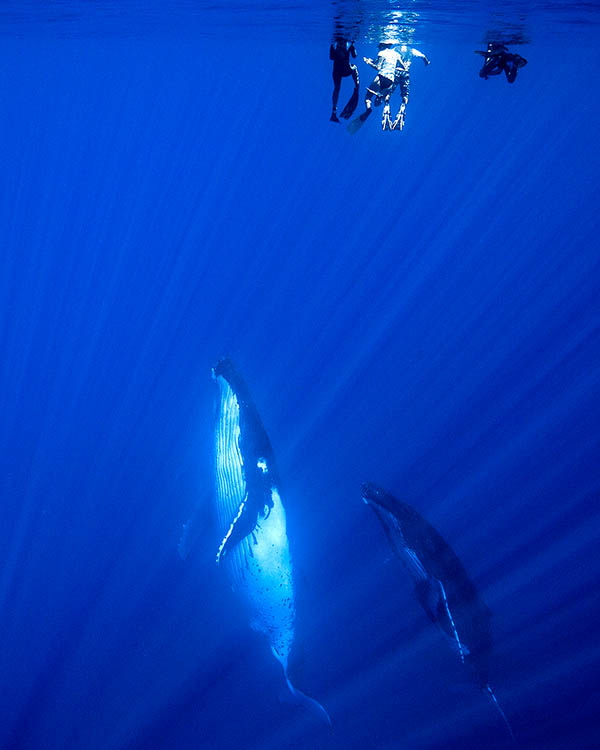
Of the 85 species of cetaceans recorded worldwide, scientists estimate that nearly 16 species frequent Polynesian waters. However, some authors agree that more than 20 species of cetaceans can frequent the waters of French Polynesia, at least seasonally.
Migratory, the humpback whale arrives from the Antarctic (feeding area) to give birth, mate, breastfeed or rest.
The presence of male singers, surface-active groups, observation of copulation attempts, and neonates confirms that French Polynesia is a breeding and calving grounds for humpback whales in the southern hemisphere.
These events are mostly observed in or near the lagoons.
The humpback whale is rather solitary or lives in small groups (2 to 4 individuals). It is often observed within 2 km of the coast and therefore evolves preferentially near the barrier reef or in the bays.
Migratory, the humpback whale arrives from the Antarctic (feeding area) to give birth, mate, breastfeed or rest.
The presence of male singers, surface-active groups, observation of copulation attempts, and neonates confirms that French Polynesia is a breeding and calving grounds for humpback whales in the southern hemisphere.
These events are mostly observed in or near the lagoons.
The humpback whale is rather solitary or lives in small groups (2 to 4 individuals). It is often observed within 2 km of the coast and therefore evolves preferentially near the barrier reef or in the bays.
